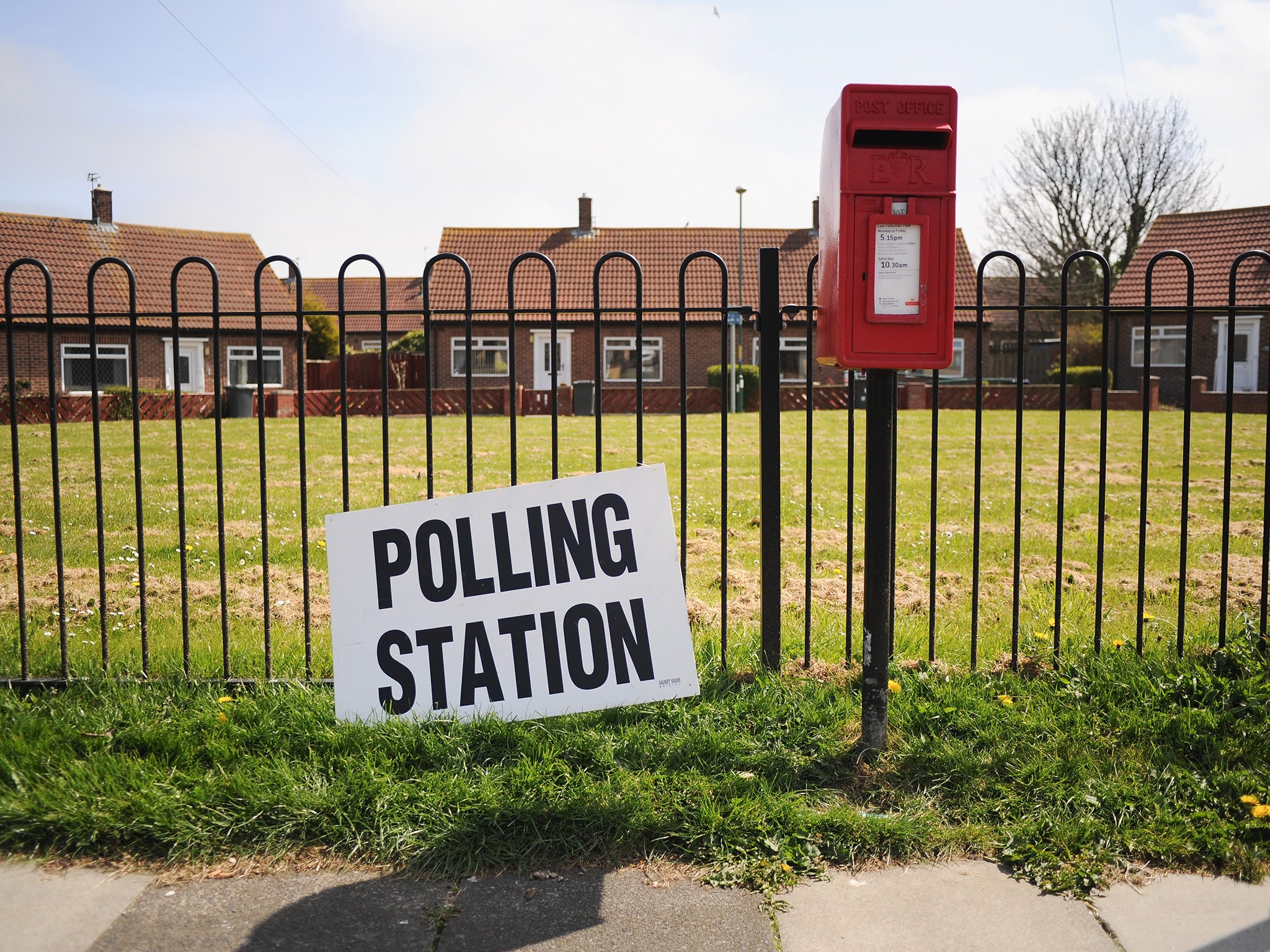General Election 2015 explained: Polling day
Continuing our daily miscellany celebrating the facts, figures and folklore of British general elections

Your support helps us to tell the story
From reproductive rights to climate change to Big Tech, The Independent is on the ground when the story is developing. Whether it's investigating the financials of Elon Musk's pro-Trump PAC or producing our latest documentary, 'The A Word', which shines a light on the American women fighting for reproductive rights, we know how important it is to parse out the facts from the messaging.
At such a critical moment in US history, we need reporters on the ground. Your donation allows us to keep sending journalists to speak to both sides of the story.
The Independent is trusted by Americans across the entire political spectrum. And unlike many other quality news outlets, we choose not to lock Americans out of our reporting and analysis with paywalls. We believe quality journalism should be available to everyone, paid for by those who can afford it.
Your support makes all the difference.Hours
Polling hours in UK general elections were first standardised in 1885, initially at 8am to 8pm. In 1913, candidates were granted the right to request a one-hour extension, either in the morning or evening. In 1950 polling hours were extended to 7am to 9pm. Since 1970, polling hours have been 7am to 10pm.
Polling stations
Polling stations are selected by local (acting) returning officers, within areas – “polling places” – identified by the local authority. Around 40,000 such stations will be in use on 7 May.
Polling stations are typically in public buildings such as schools, community centres and village halls – but they do not have to be. Other premises that have been satisfactorily used as polling stations include pubs, supermarkets, fish-and-chip shops and temples.
Are you undecided about who to vote for on 7 May? Are you confused about what the parties stand for and what they are offering? Take this interactive quiz to help you decide who to vote for...
Wherever possible, there should be no more than 2,500 voters per polling station.
Booths
Polling booths are temporary structures in polling stations which allow voters to mark their ballot papers in privacy. They should be positioned so as to be observable by polling officers and poll clerks, without it being possible for anyone to see how voters are voting.
Each polling booth should include sharpened pencils, attached to string long enough to accommodate both right- and left-handed voters.
Notices
The notice “Guidance for voters” has to be displayed inside and outside the polling station. This may be in as many languages as the (acting) returning officer sees fit.
The only notice that should be displayed in the booth is the one that explains how to vote. This should be no smaller than A3 in size.
Ballot boxes
Ballot boxes can be made of anything. The only legal requirement is that “every ballot box shall be so constructed that the ballot papers can be put in it, but cannot be withdrawn from it, without the box being unlocked”, according to the Association of Electoral Administrators.
The ballot box is locked when the polls open and sealed by an official when they close. All participating parties have the right to place their own seals on ballot boxes at the close of the poll, to prevent fraud.
(Acting) returning officers (AROs) are responsible for ensuring that polling stations are adequately supplied with ballot boxes. The Electoral Commission’s advice for AROs warns: “There is no legal solution to running out of space in the ballot box on polling day itself. If you haven’t sealed a second box at the opening of the poll to have ready in case it is needed, there is no other course of action that you can take during the day that does not run the risk of challenge.”
Access
In addition to voters, the following categories of people are allowed in a polling station on polling day: the Returning Officer and staff; candidates, election agents and polling agents; police officers on duty at the polling place; representatives of the Electoral Commission; accredited observers; persons under the age of 18 who accompany voters; companions of voters with disabilities.
The media have no rights to enter a polling station except as voters and are prohibited from filming or interviewing voters in the polling station.
Polling station inspectors, appointed by the (acting) returning officer, are required to visit each polling station in their area several times, to check accessibility, equipment and for the observation of correct procedures.
Polling station staff are not permitted to leave the premises during hours of poll.
Since 1970, polling hours have been 7am to 10pm (Getty Images)
Results
Results are usually declared by a constituency’s returning officer. There is fierce competition between some of these to be first in the country to declare their constituency’s result. The first result in 2010 came from Houghton AND Sunderland, South, which declared at 10:52pm.
Houghton and Sunderland’s predecessor constituency, Sunderland South, was first to declare in 1992, 1997, 2001 and 2005. In 2001 it declared 41 minutes after the close of polling – the fastest ever.
Previous winners include: Torbay (1983, 1987), Glasgow, Central (1979), Guildford (1970, February 1974 and October 1974) and Cheltenham (1964, 1966 – and 1955, in a dead heat with Salford, West).
Weather
Since 1918, the wettest general election polling days have been in 1918, 1935, 1955 and February 1974.
The hottest have been June 1943, 1945 and 1970. The coldest was February 1974.
Close of poll
Polling closes at 10pm. However, anyone who has been issued with a ballot paper by 10pm must be allowed to vote.
In the 2010, hundreds of voters experienced difficulties trying to vote before 10pm, because of queues and crowds at polling stations. At least 27 polling stations were affected.
Join our commenting forum
Join thought-provoking conversations, follow other Independent readers and see their replies
Comments